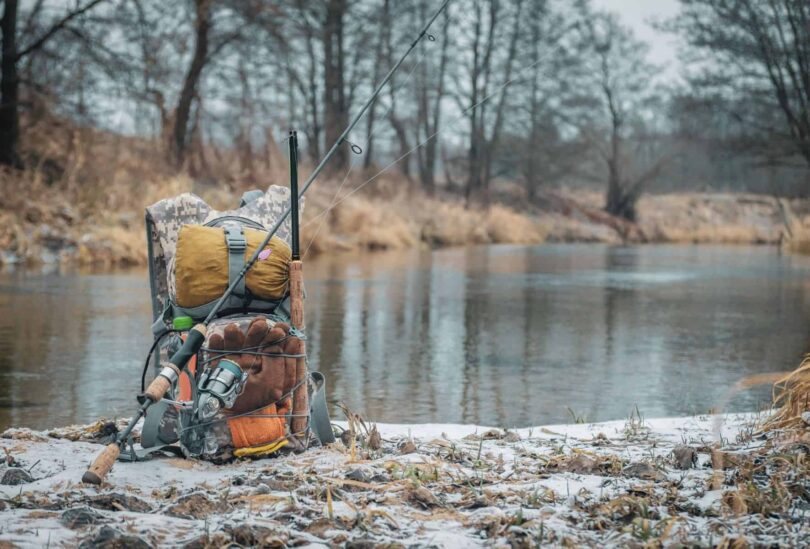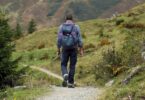If you enjoy hiking and fishing, you’ll love combining both of these at the same time. It’s a wonderful feeling to catch fish while you’re out backpacking.
In addition to the thrill of catching a fish in the wilderness, you’ll also get to enjoy delicious fresh fish at your campfire. If you’ve ever caught a wild trout in a crystal clear mountain lake, and then cooked it at your campfire, you know exactly what I’m talking about.
However, if you plan to combine fishing with backpacking, it’s important to avoid weighing down your backpack with too much extra bulk from excess fishing gear, while maximizing your chances of catching fish.
In this article we’ll walk you through the right fishing equipment to take along, the ideal locations to target, as well as the best tactics to use while fishing on a backpacking trip.
What fishing equipment should you bring along while backpacking?
I recently had the pleasure of going on a backpacking fishing trip with the team from SportfishingBuddy, and they showed me exactly what fishing gear to bring along while backpacking.
In general, you’ll want to choose rods and reels that are as lightweight and compact as possible, so they don’t weigh you down unnecessarily.
Fishing rod
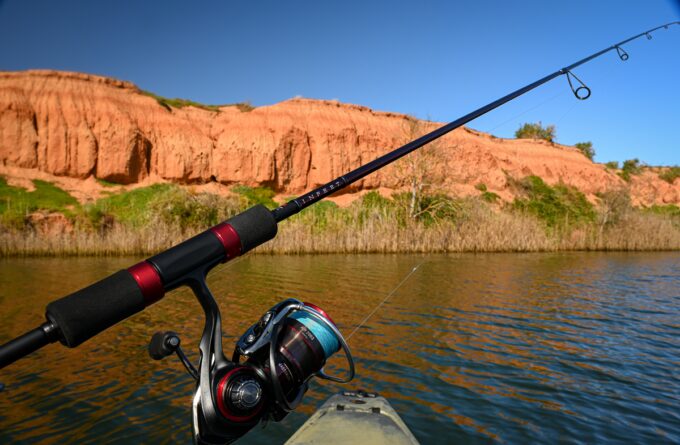
Source: daiwafishing.com.au
While you can bring more than one fishing rod, I prefer to have just one general purpose rod that can be used for many different types of fishing. The best option for this is a short spinning rod that’s about 6 feet long, with medium light power and fast action.
This type of rod can be used for fishing with lures, bobbers, or fishing rigs, and it can be used almost anywhere where you can hike. However, in order to be able to stow it in your backpack easily, you should choose a four piece rod, which is very short when taken apart.
In terms of size, a lightweight spinning rod is ideal for catching small to medium sized trout, steelhead, bass or panfish, which are most likely going to be the fish species you’ll encounter while backpacking in the wilderness.
Fishing reel
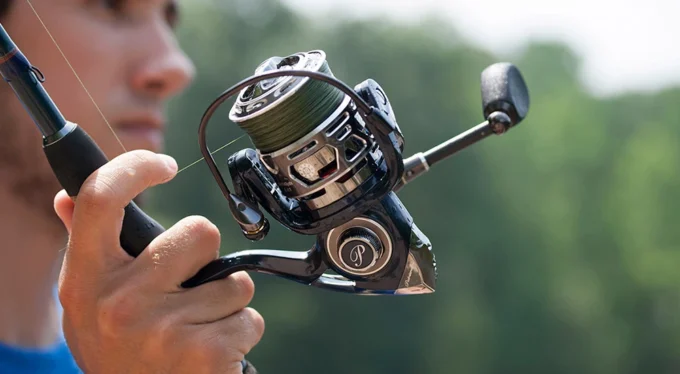
Source: scheels.com
Choose a lightweight spinning reel to go along with your spinning rod. I like to use a medium to fast spinning reel that weighs less than 6 or 7 ounces. This is lightweight enough to avoid weighing down your backpack, while it’s strong enough to catch even big trout or bass.
Fishing line
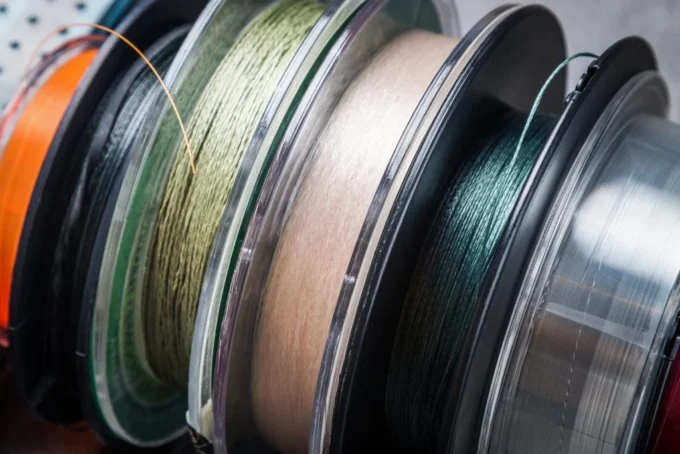
Source: fishingbooker.com
If you’re targeting trout in very clear streams of lakes, the best fishing line to use is fluorocarbon, which has very low visibility in the water. You can use either 4 lb test 6 lb test, since this is plenty strong enough to catch small or medium sized fish.
Fishing lures
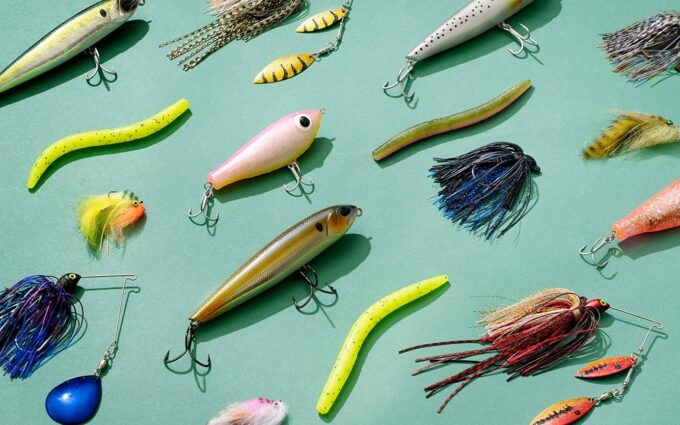
Source: texasmonthly.com
In addition to the rod, reel, and line, you should also bring along a small selection of fishing lures, including small spoons, crankbaits, soft plastic lures, and inline spinners. All of these can be very effective for catching trout, as well as other fish, such as bass or walleye.
Other fishing tackle
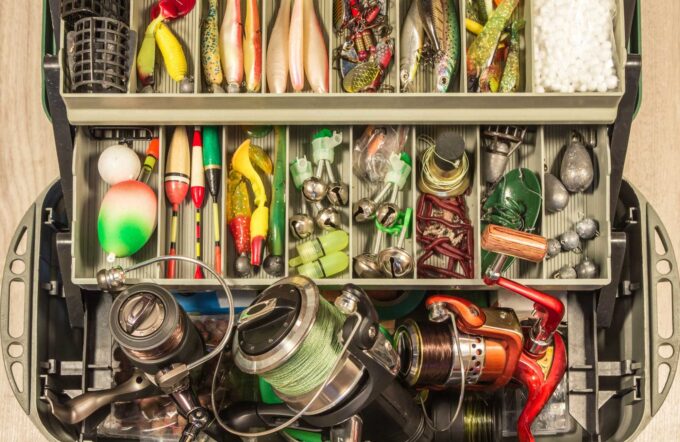
Source: scuba.com
In addition to the basic fishing equipment listed above, you should consider bringing some fishing bobbers, hooks and sinkers. All of these are fairly lightweight, and are great to have if you want to fish with a bait instead of a lure.
Also make sure that you pack the most important wilderness survival tools (such as a knife and a fire starter), which are useful not just for fishing, but have many other uses as well.
What are the best places to fish while on a hiking trail?
In principle, you can fish in almost any body of water that you come across while on the trail. This includes very small creeks, and ponds, which can often hold fish even if they appear to be very small.
However, if possible, it’s best to target medium sized lakes, streams or rivers, since the deeper water enables the fish to grow larger, while they are still small enough to be able to reach fish comfortably while casting from the shore.
If you fish in a mountain lake, try to fish along the edge of shallow areas and drop offs, which are often patrolled by hungry trout. The larger the lake, the harder it can be to find the trout, which is why I recommend the small to medium sized bodies of water.
What are the advantages of fishing while backpacking?
In case you’re wondering if it’s worth the trouble to bring along bulky fishing gear in your backpack, there are several key advantages to fishing on the trail.
First of all, you’ll get access to locations that are rarely fished by other anglers, since they are hard to reach without hiking there on foot. This means the fish will be a lot easier to catch, since they don’t experience the same fishing pressure as fish in other locations.
Secondly, you’ll be able to fish in pristine waters that are often crystal clear, and don’t have the pollution issues that waters closer to urban centers have. Because of this, the fish tend to taste much better, and are also more nutritious.
Finally, if you manage to catch a few trout or steelhead on your backpacking trip, this makes for an excellent campside meal, especially if you like to eat fresh fish. The flavor of these freshly caught fish from the wilderness is just so much better than what we’re used to in the city.
What are the best fishing tactics to use while backpacking?
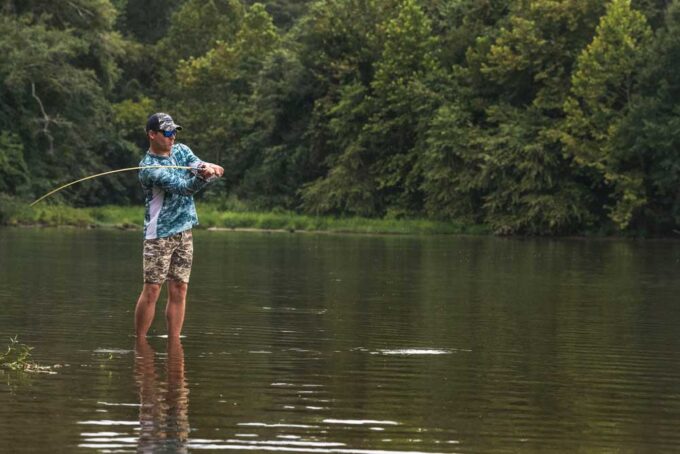
Source: mossyoak.com
If you want to keep things as simple as possible, just focus on fishing with lures when you’re out on the trail. That way you can keep your backpack as light as possible, and don’t need to bring any live bait, or mess around trying to find live bait in your location.
It’s best to have a good selection of small to medium sized fishing lures that are easy to cast with a spinning rod and reel. This includes small crankbaits, jigs, and spoons, which are great for catching trout in mountain lakes or rivers.
However, if you’re willing to make the extra effort, another great option is to use bait, such as PowerBait (which you can bring along), or live bait that you gather at the shore of your fishing spot.
If you turn over some rocks or logs at the side of a lake or river, you’ll probably find some dragonfly larvae, and these make an amazing bait for trout. The best way to fish them is with a circle hook that is rigged underneath a fishing bobber.
The nice thing about fishing with a bobber is that you can just cast it out and enjoy the beautiful scenery while waiting for a bite.

